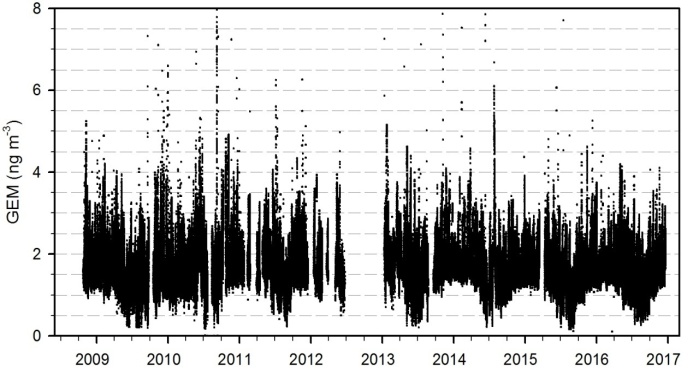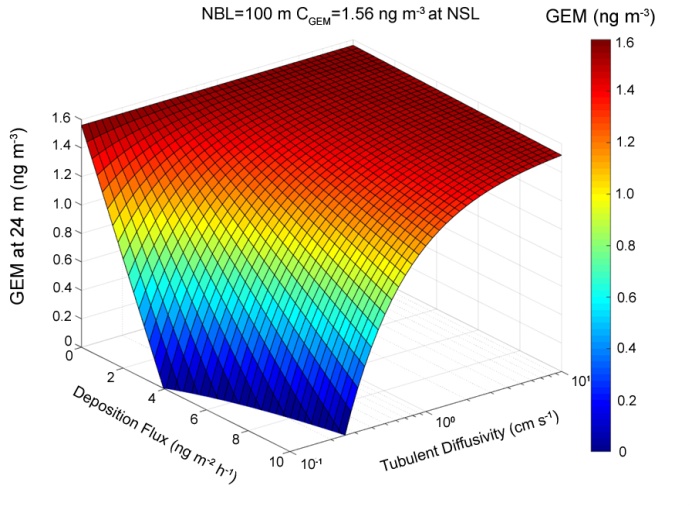 |
|
Figure1 Depletion of GEM at Mt. Changbai forest (Image by IGCAS)
|
 |
|
Figure 2 Modeling predicted concentrations of GEM in the presence of foliar uptake of GEM (flux = 7.3 ng m-2h-1)(Image by IGCAS)
|
With the support by the National Natural Science Foundation of China and the National 973 Program of China, the research team led by Prof. FENG Xinbin at the State Key Laboratory of Environmental Geochemistry, Institute of Geochemistry, Chinese Academy of Sciences, uncovered the mystery of depletion of atmospheric gaseous elemental mercury (GEM) by plant uptake in a temperate mixed forest at Mt. Changbai, Northeast China, which was published in Atmospheric Chemistry and Physics (2016, 16(20): 12861-12873).
Mercury (Hg), especially its methylated form, is a potent neurotoxin to humans and wildlife. Because of its high volatility, mild reactivity, and water solubility, GEM is the dominant (> 90 %) form of total Hg in the atmosphere and has an atmospheric residence of from several months to a year. It is generally believed that the conversion of GEM to gaseous oxidized mercury (GOM) and particulate bound mercury (PBM) followed by rapid wet and dry deposition of GOM and PBM is the dominant pathway for the scavenge of GEM from the atmosphere, whereas the scavenge of atmosphere GEM by other pathways are less understood.
FENG Xinbin's group had measured atmospheric GEM at Mt. Changbai forest in Northeast China over a time scale of 8 years. They observed strong depletions of atmospheric GEM during the leaf-growing seasons (Figure 1). These depletions occurred predominantly at night and generally lasted for 0.5-6 hours. GEM concentrations during the strong depletion events decreased rapidly from background level of ~1.50 ng m-3 around noon to < 0.5 ng m-3 at night, corresponding to > 65% loss of GEM.
In order to elucidate the potential mechanisms related to the depletion of GEM at Mt. Changbai forest, they measured vertical gradient of GEM, atmospheric GOM and PBM concentrations, GEM isotopes, and foliar/air exchange flux of GEM at Mt. Changbai forest. All the findings suggest that uptake of GEM by forest canopy plays a predominant role in the GEM depletion at Mt. Changbai forest (Figure 2).
This finding challenges our general understanding of global atmospheric Hg cycling and suggests that the forest ecosystem represents one of the largest sinks (~1930 Mg) of atmospheric Hg at global scale.
Contact:
FENG Xinbin
Institute of Geochemistry, Chinese Academy of Sciences
E-mail: fengxinbin@vip.gyig.ac.cn
(By Prof. FENG Xinbin's group)